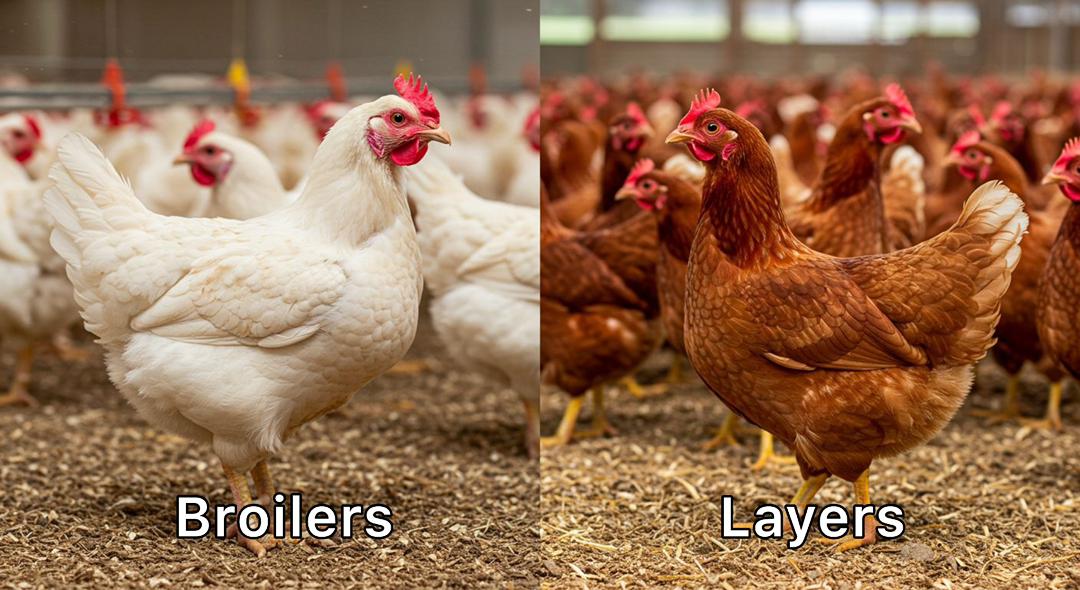Introduction
Poultry farming is a crucial sector in agriculture, providing meat and eggs for human consumption. The two primary types of poultry birds raised commercially are layers (for egg production) and broilers (for meat production). While both are chickens, they differ significantly in terms of breed, management, and economic benefits. This article explores the characteristics of layer and broiler birds, compares them, and highlights the advantages and disadvantages of rearing each.
Broiler Birds Broiler birds are raised primarily for meat. They grow rapidly, reaching market weight (2-3 kg) in 5-7 weeks. Characteristics of Broiler Birds: i. Fast growth rate due to selective breeding. ii. High feed-to-meat conversion ratio. iii. Require protein-rich feed for muscle development. iv. Short production cycle (6-8 weeks per batch).
Layer Birds Layer birds are specifically bred for high egg production. They start laying eggs at around 18-20 weeks of age and can produce eggs for 12-15 months before their productivity declines.
Characteristics of Layer Birds: i. Lightweight with a lean body. ii. High feed-to-egg conversion efficiency. iii. Can lay 250-300 eggs per year under optimal conditions. iv. Require proper lighting and nutrition (calcium-rich feed) for consistent egg production.
Comparison between Layer and Broiler Birds
Broiler Birds (Meat Production)
| Feature | Broiler Birds | Layer birds |
|---|---|---|
| Purpose | Meat production | Egg production |
| Growth Rate | Rapid growth, ready in 5-7 weeks | Slow growth, mature at 18-20 weeks |
| Feed Requirement | High-protein diet for muscle growth | Balanced diet with calcium for eggshell |
Advantages and Disadvantages of Rearing Broiler Birds:
Advantages:
- Fast Turnover: Ready for sale in 6-8 weeks.
- High Demand: Meat has a consistent market.
- Less Space Needed: Can be reared in large numbers in confined spaces.
Disadvantages:
- High Feed Cost: Requires expensive protein-rich feed.
- Disease Susceptibility: Rapid growth makes them prone to leg and heart issues.
- Fluctuating Market Prices: Profit depends on meat demand and feed costs.
Advantages and Disadvantages of Rearing Layer Birds
Advantages:
- Steady Income: Continuous egg production provides regular revenue.
- Long Production Cycle: Layers remain productive for over a year.
- Lower Feed Cost (Compared to Broilers): Layers consume less high-protein feed.
Disadvantages:
- Delayed Returns: It takes 5 months before hens start laying.
- Management Challenges: Requires strict lighting and nutrition control.
- Declining Productivity: Egg production drops after 12-15 months.
Conclusion
Both layer and broiler farming have unique benefits and challenges. Layer farming is ideal for farmers seeking long-term, steady income from eggs, while broiler farming suits those looking for quick returns from meat production. The choice depends on market demand, capital, and management capabilities. A balanced approach, such as integrating both layers and broilers, can maximize profitability in poultry farming. Would you like additional details on feeding, housing, or disease management for layers or broilers? Let me know!
